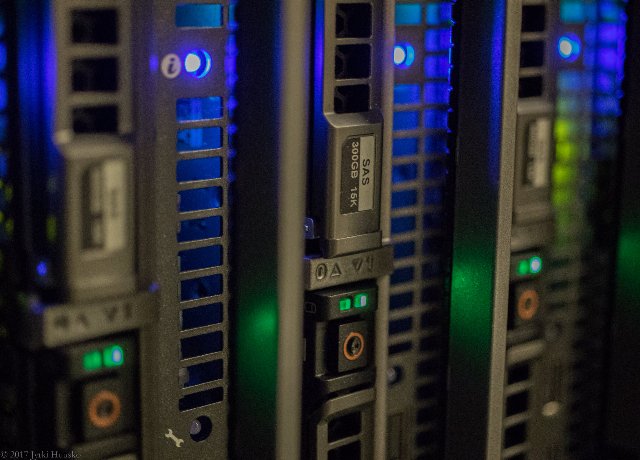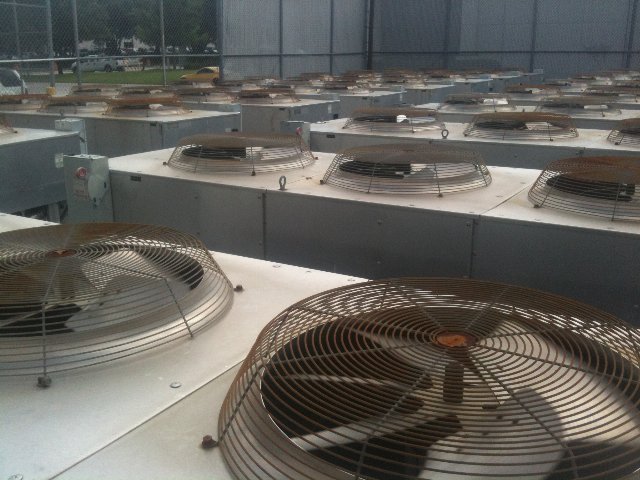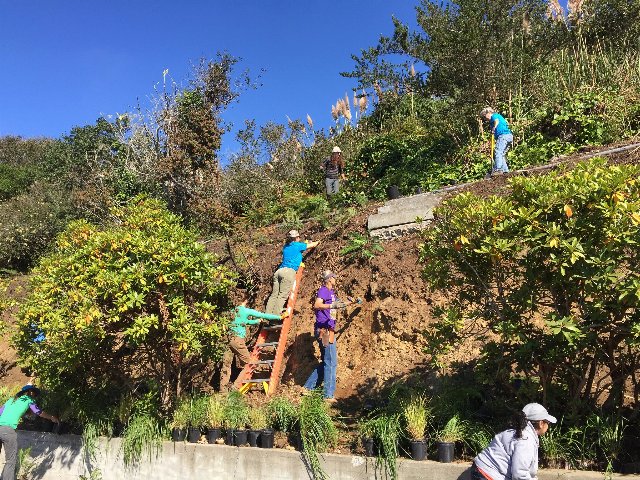New Server: Software & Hardware
August 30th, 2021 by Alex Zorach
In case you have been wondering about the lack of activity or updates over the past month, we've been working behind-the-scenes to set up a new server. And it is now all set up!The new server brings both hardware and software upgrades, primarily to ensure the site can continue to function quickly and smoothly even with higher levels of traffic. We received unprecedented traffic after our July publication of new range maps and we want to make sure our infrastructure can keep up with demand!
 This photo shows blade servers (narrow, minimal, modular computers) in a data center. These were actually upgraded in 2017, so this photo represents what older servers looked like, not what our present ones do. Photo © Jyrki Huusko, CC BY 2.0, Source.
This photo shows blade servers (narrow, minimal, modular computers) in a data center. These were actually upgraded in 2017, so this photo represents what older servers looked like, not what our present ones do. Photo © Jyrki Huusko, CC BY 2.0, Source.What will I notice?
Hopefully, you will notice either nothing at all, or slightly faster and more consistent site speed and more consistent uptime.What has been improved behind-the-scenes?
Our software upgrades have improved both performance and security. We have upgraded to newer versions of various software packages, moving away from older versions that had limited support lifecycles. These moves were necessary to ensure long-term stability. We have rewritten a large portion of our code to be compatible with newer software versions, and we made some tweaks to our databases as well. We also made configuration changes to save time in maintaining the site long-term.Why is security important for a plant website?
People outside the IT industry might not be aware of how important security is, but even a non-controversial site like bplant is constantly subjected to hacking attempts, as well as other malicious use of the site, such as botnets filling out forms with fake data, or trying to put spam in our contact form or user profiles.However, we are also planning to start accepting donations and/or subscriptions directly on our site in the near future (currently we accept them only through Liberpay) and allow creation of user accounts by a broader range of people, and these changes will also demand higher standards of security.
Why is speed and efficiency important?
People often perceive website speed and efficiency only as a matter of convenience, but we see it as having deeper importance.Inefficiency has environmental implications.
Slow site speed often results from inefficient programming and/or design that places unnecessary burdens on CPUs, both of the server hosting a website, and the computers of the people viewing it in their browsers. This burden reflects use of electricity and other resources, many of which are still generated from dirty, non-renewable sources, thus driving climate change and other forms of pollution. Programming efficiency thus has environmental implications. The fans here are part of the HVAC system of a Houston data center. Websites and other online services use electricity both directly through computers, and indirectly through climate control systems essential to their operation. Photo © I am R. (Flickr), CC BY 2.0, Source.
The fans here are part of the HVAC system of a Houston data center. Websites and other online services use electricity both directly through computers, and indirectly through climate control systems essential to their operation. Photo © I am R. (Flickr), CC BY 2.0, Source.Even if these effects are small relative to other industries, as our mission and purpose are to preserve, protect, and restore biodiversity, we take all aspects of sustainability seriously, including efficient programming. We also hope that our lean, minimal coding can set an example that other web developers can follow.
Why is uptime important?
We want our site to be available on demand, whenever needed as a reference. Even short periods of downtime (minutes or hours) can be annoying or inconvenient, interrupting people's work, making them to take note of material and return to it later. Longer periods of downtime, such as days, can seriously interrupt workflow and result in people missing deadlines. We are committed to minimize downtime so that people can depend on our site as a resource. We have also structured our site so that we can keep the public-facing, reference components of the site, such as articles, maps, and photos, up even if we ever need to temporarily disable logins or other interactive components.Slow or unreliable sites limit people's ability to work.
Downtime and slow response speeds also hinders people's ability to use our site as a reference. Anyone looking up a lot of material on our site, clicking around exploring different pages, will either waste time or be kept from doing as much work if the site is slow or unreliable. The work people do that would use our site as a reference, including ecological restoration, native plant gardening or landscaping, invasive plant control, and simply learning about plants, is important, and we want people to be able to do these things more quickly and effectively. One of the reasons for making our site fast and reliable is so that people can spend less time at the computer, get their research done quickly, and spend more time outdoors working to protect and restore our ecosystems! Photo from U.S. Bureau of Land Management, Public Domain, Source.
One of the reasons for making our site fast and reliable is so that people can spend less time at the computer, get their research done quickly, and spend more time outdoors working to protect and restore our ecosystems! Photo from U.S. Bureau of Land Management, Public Domain, Source.Our behind-the-scene software upgrades are only one of many ways we promote efficiency, but they are an important part.
Go and enjoy the site on our new server!
Archive of All Blogs
The Bias Against Tall Plants, November 11th, 2025
A Focus on Goldenrods (Solidago sp.), July 23rd, 2025
Disturbance and its Role in Plant Habitat Preferences, May 29th, 2025
What "Native" or "Introduced" Mean: Myths and Misconceptions, March 11th, 2025
Smarter & More Informative Search Results, January 13th, 2025
The Effect of the 2024 US Election on Plant Biodiversity and bplant.org, October 30th, 2024
The Problems With Nursery-Bought Plants, And The Solutions, October 8th, 2024
More Databases Linked & Search Improvements for Scientific Names, July 9th, 2024
Choosing The Best Common Names For Plants: Challenges & Solutions, April 19th, 2024
Range Map & Taxonomic Update Progress, January 31st, 2024
Giving Thanks To Everyone We Rely On, November 22nd, 2023
Thinking More Deeply About Habitat, April 5th, 2023
2022 Year-End Summary: Successes & New Goals, February 15th, 2023
New Databases Linked: Flora of North America & NatureServe Explorer, November 11th, 2022
All Range Maps 2nd Generation, Taxonomic Updates, & Fundraising Goal Met!, September 29th, 2022
More Range Map Improvements, POWO Interlinking, And Notes Fields, June 7th, 2022
Ecoregion-Based Plant Lists and Search, March 30th, 2022
Progress Updates on Range Maps and More, February 10th, 2022
The Vision for bplant.org, December 9th, 2021
New Server: Software & Hardware, August 30th, 2021
More & Improved Plant Range Maps, July 19th, 2021
A Control Section for Invasive Plants, April 15th, 2021
Progress Bars & State Ecoregion Legends, March 11th, 2021
Our 2020 Achievements, February 9th, 2021
Interlinking Databases for Plant Research, November 11th, 2020
A New Homepage, Highlighting Our Articles, July 29th, 2020
A False Recovery, But North Carolina's Ecoregions are Complete!, June 9th, 2020
We're Back After COVID-19 Setbacks, April 3rd, 2020
Help Us Find Ecoregion Photos, February 27th, 2020
What We Achieved in 2019, December 30th, 2019
Plant Comparison and ID Guides, October 30th, 2019
We Are Now Accepting Donations, October 14th, 2019
US State Ecoregion Maps, New Footer, Ecoregion Article Progress, and References, September 19th, 2019
Tentative Range Maps of Native Plants, August 12th, 2019
Ecoregion Locator and Interactive Maps, July 10th, 2019
Using Ecoregions Over Political Boundaries, May 13th, 2019
How We Handle Wild vs Cultivated Plants, April 16th, 2019
A Blog To Keep People Updated On Our Progress, April 8th, 2019
Sign Up
Want to get notified of our progress? Sign up for the bplant.org interest list!


